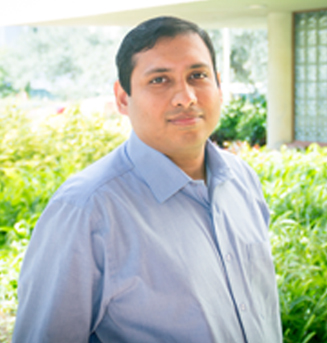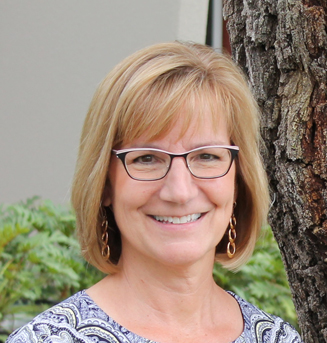College of Engineering News Room
NIH Grant Funds New Optical Biosensor Technology
By Brad Stager

The two-year National Institutes of Health project researches how near-infrared light propagation and optical analysis can be used to measure blood flow in the brain. Investigators are Ashwin Parthasarathy, assistant professor in the University of South Florida Department of Electrical Engineering and Ann Eddins, professor in the Department of Communication Sciences & Disorders and co-director of that department’s Auditory & Speech Sciences Laboratory. Miniaturization of biosensors is one of the most significant trends in medical device engineering and a new grant from the National Institutes of Health will support research in creating technology that can continuously monitor blood flow in patients.

The research funded by the grant builds on knowledge produced by the Translational Optics Imaging & Spectroscopy Lab @ USF, which Parthasarathy directs. The lab applies principles of electronics and medical engineering to develop non-invasive tools that interact with human tissue through optical means. One example of this kind of technology that is already widely used by clinicians and consumers alike are oximeters, which measure oxygen saturation in blood. According to Parthasarathy measuring blood flow can provide another perspective when monitoring patients.
“If you think about the way tissues function, blood flow is the first parameter that’s important because blood flow is what delivers oxygen to the tissues” he says.
“If you don’t measure blood flow the picture is incomplete.”
Improving diagnosis and monitoring of patients with medical conditions such as strokes, brain injuries and cancer are possible benefits cited in the grant proposal.
The clinical element of the project is provided by Eddins, whose research interests examine topics related to hearing and aging processes of human auditory and brain systems. Measuring biological processes and markers is an interest she shares with Parthasarathy and the project provides a chance to try novel methods to do so.
“It offers a different way of evaluating cortical function so it’s exciting,” says Eddins, who earned her PhD in auditory physiology from State University of New York at Buffalo.
“Blood flow is a necessary part of neural communication in the brain, so it’s studying similar auditory function as I have been doing but with cutting edge technology.”
Another aspect of the project appealing to Eddins is its cross-disciplinary nature.
“It’s providing great collaboration across different colleges and different fields.”
Current medical technology available to monitor blood flow uses primarily either radio waves (MRI scan) or X-rays (CT scan). Equipment for both methods is much larger and more expensive than the portable optical devices Parthasarathy hopes will eventually result from the research, describing his proposed optical probes as about the size of a pack of gum which measures 1” x 2.”
“You could put the probe where you want,” says Parthasarathy, who received his PhD in biomedical engineering from the University of Texas at Austin. “The forehead is one of the spots we want to put it usually, but you can also place probes anywhere on the head to target regions of the brain.”
Besides convenience, Parthasarathy anticipates greater accuracy in patient monitoring with optical devices, especially if they measure both oxygen saturation and blood flow.
“Blood flow is more of a robust indicator over oxygenation, particularly for brain activity. It allows you to make smaller measurements more precisely.”
To achieve the goal of creating a device that can accurately determine both oxygen level and blood flow from a single measurement, Parthasarathy is developing a new diffuse optical technique called Frequency Domain Diffuse Correlation Spectroscopy which minimizes conflict between the two hemodynamic parameters.
Parthasarathy expresses optimism about his research advancing optical instrumentation but is keeping in mind the principles that will help achieve that goal.
“With rigorous validation experiments we can enhance the impact of this technique for clinical use.”